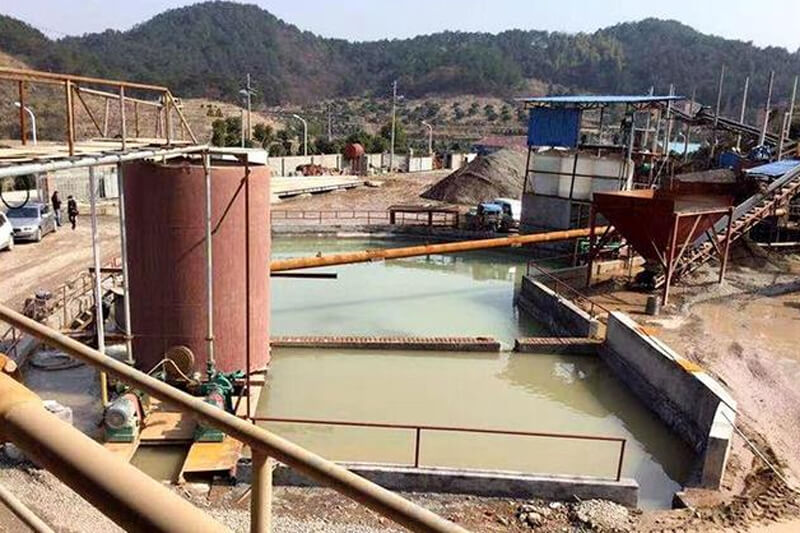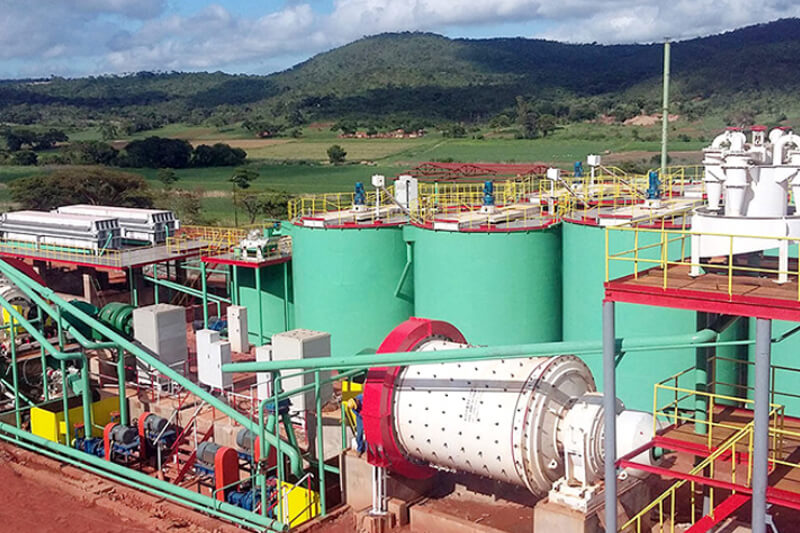We were established as the most specialized mineral processing equipment company since 1985.
The wastewater produced in the process of mineral processing is one of the main factors of mine environmental pollution. Its pollutants mainly include solid suspended solids, persistent heavy metal ions, flotation reagents, and oil pollution. This wastewater is directly discharged without treatment. It will destroy rivers, soil, farmland, wetlands, etc., around and downstream of the plant and eventually endanger human health. Therefore, controlling and recycling mineral processing wastewater is very important.
The method of mine-washing wastewater treatment is mainly to remove suspended solids in sewage using sedimentation, flocculation, filtration, etc., to prepare for subsequent treatment. The specific sewage treatment processes include precipitation, flocculation, filtration, etc.
(1) The precipitation method is to adjust the pH value to make the suspended matter form flocs.
(2) The filtration method uses mechanical methods to remove the suspended matter.
The precipitation and filtration methods have advantages and disadvantages, making them more efficient. The specific process selection can be determined according to the sewage water quality and volume.
The ore-washing wastewater mainly includes mud, sand water, ore-washing slurry, and other debris, which can meet the discharge standard through reasonable treatment.

The ore-washing wastewater mainly comes from the production process of the ore-dressing plant. According to the needs of ore washing production, the ore is crushed, screened, classified, and ground. The finished ore with low content is washed to the specified index and finally filtered and removed by special equipment to remove metal impurities and suspended solids. Washing wastewater contains many suspended solid impurities, heavy metal ions, and chemical pollutants.
(1) Large emissions
The large discharge of mineral processing wastewater is closely related to factors such as the low quality of ore resources in my country, the complexity of the mineral processing process, and a large amount of selected ore. Generally speaking, for every 1 ton of ore processed in my country, the magnetic separation and flotation methods require 4-7m3 of water, the gravity separation method requires 20-26m3 of water, the floating-magnetic combined separation requires 6-10m3 of water, and the heavy-floating combined separation requires 20-20m3 of water. 30m3. A small part of these waters is recycled, and most of them are discharged from the concentrator as a slurry with the tailings.
(2) High content of suspended solids and total dissolved solids
The high content of suspended solids is the most intuitive feature of mineral processing wastewater. These suspended solids are mainly fine primary ore slime particles and secondary slime particles. Suppose dispersants such as water glass are used in the mineral processing process. The suspended solids in wastewater content will be higher. In that case, the stability will be better, and it will be less likely to settle.
(3) Complex composition
Residual chemicals and heavy metal ions are the main factors that cause harm to mineral processing wastewater and are also the most difficult factors to treat. This situation is especially serious in non-ferrous metal mines. The beneficiation wastewater of most mines contains copper, lead, zinc, cadmium, germanium, chromium, arsenic, and other heavy metal ions to varying degrees. Due to the non-degradability of heavy metal ions, they will be latent in the water body for a long time, making it a good choice for treating beneficiation wastewater.
Residual chemicals are mainly collectors, frothers, and regulators added in the flotation process, which are responsible for the chemical oxygen demand (COD), biochemical oxygen demand (BOD), pH value (strong acid or high alkali) of the water body ) and other indicators exceeding the main factors.
The basic characteristics of beneficiation wastewater depend on the scale of the beneficiation plant, the nature of the ore, the fineness of grinding, the process flow, and the pharmaceutical system. Generally, the larger the scale of the concentrator, the greater the wastewater discharge; the finer the grinding particle size, the higher the suspended solids content in the wastewater; the more complex the properties of the ore, the more types and concentrations of heavy metal ions in the wastewater, the higher the COD, pH value and other indicators are also more likely to exceed the standard.

Suspended solids and other pollutants in ore-washing wastewater collide with suspended solids and undergo polymerization reactions to form flocculents during settlement, which is the function of flocculants. These flocculation substances have strong adsorption, which can absorb some inorganic, organic, colloid, and other pollutants in the water so that they can be condensed together to form large particles of suspended matter.
We usually use a combination of clarification and filtration to achieve further separation purposes. Clarification is generally carried out under gravity, and the suspended solids and pollutants in the ore-washing wastewater are separated by using the gravity settling tank and then entering the filter tank. Concentrate on the filter and discharge through the sludge discharge device. Filtration is carried out in the filter tank, and the filter equipment intercepts the suspended solids to the clarification tank, and the clarified water quality meets the discharge standard.
The primary treatment method of ore-washing wastewater is flocculation and precipitation. Commonly used flocculants include polyacrylamide, poly aluminum chloride, aluminum sulfate, etc. In the treatment of ore-washing wastewater, the appropriate flocculant is selected according to the properties of the ore-washing slurry. It produces stable flocs to achieve the effect of rapid sedimentation.
In addition, add corresponding chemicals according to specific process requirements to meet sewage treatment standards.
1. Sedimentation Tank: The sedimentation tank settles sludge and removes pollutants through natural settlement.
2. Filter: The filter separates solid pollutants in wastewater, in which flocculants and coagulants are added to the filter to improve the flocculation effect.
3. Siphon device: extracted filtered sewage from the filter tank. Click gold trommel scrubbers to learn about the effective ore washing Sipon device.
4. Clean water pump: The water pump extracts the treated water to meet the discharge standard.
After the treatment of ore-washing wastewater, the water quality has reached the secondary standard in the “Integrated Wastewater Discharge Standard” (GB8978-1996). Discharging it to the sewage treatment plant for centralized treatment can improve the removal rate of suspended solids in the sewage and reduce the burden of subsequent processing and processing costs.
The treatment methods of ore-washing wastewater mainly include sedimentation, flocculation, and filtration.
(1)The precipitation method is suitable for the treatment of low-concentration ore-washing wastewater. It’s a simple operation and simple equipment structure;
(2)The flocculation method is suitable for treating high-concentration ore-washing wastewater. It has a high removal rate and good water effluent effect;
(3)The filtration method is suitable for treating low-concentration ore-washing wastewater. It has a high filtration efficiency and good effluent quality.
We determined the selection of the ore-washing wastewater treatment process according to the nature and treatment volume of the wastewater and the appropriate method for wastewater treatment should be selected.
